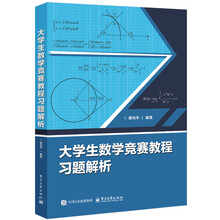目录
1 Definitions and Examples of Morita Context Rings
1.1 Definitions of Morita context rings
1.2 Classical matrix algebras
1.2.1 Full matrix algebras
1.2.2 Triangular matrix algebras
1.2.3 Block upper triangular matrix algebras
1.2.4 Inflated algebras
1.3 Quasi-hereditary algebras
1.3.1 Basic construction
1.3.2 Dual extension algebras
1.4 Two non-degenerate examples
1.4.1 Morita context rings from smash product
1.4.2 Morita context rings from group algebras
1.5 Examples of operator algebras
1.5.1 Triangular Banach algebras
1.5.2 Nest algebras
1.5.3 von Neumann algebras
1.5.4 Incidence algebras
2 Linear Mappings on Morita Context Rings
2.1 Commuting mappings on Morita context rings
2.1.1 Posner Theorem
2.1.2 Commuting mappings and centralizing mappings
2.1.3 Skew commuting and skew centralizing mappings
2.2 Lie derivations on Morita context rings
2.3 Jordan derivations on Morita context rings
2.4 Jordan generalized derivations on triangular algebras
2.5 Lie triple derivations on triangular algebras
2.5.1 Proof of the main Theorem
2.5.2 Another look to Theorem 2.5.1
2.6 Local actions of linear mappings on Morita context rings
3 Non-linear Mappings and Higher Mappings
3.1 Characterization of Jordan higher derivations
3.2 Jordan higher derivations off some operator algebras
3.3 Jordan higher derivations on triangular algebras
3.4 When a higher derivation is inner
3.5 Non-linear Lie higher derivations
3.6 Non linear Jordan bijective mappings
3.7 Jordan higher derivable points
Bibliography
内容摘要
李彦博、肖占魁编写的这本《Morita系统环上的可加映射》的英语提要如下: Morita context rings were first introduced by Morita in [83], in order to characterize when two rings have equivalent module categories. A fundamental result is that the categories of modules over two rings with identity R and 8 are equivalent if and only if there exists a strict Morita context connecting R and S, where “strict” implies that both Morita maps being surjective. Morita contexts have been used to the study of group actions on rings and Galois theory for commutative rings. We refer the reader to [77] for details. Moreover, some aspects of Morita context rings have been studied. For examples, in [92], Sands investigated various radicals of rings occurring in Morita contexts. R. Buchweitz investigated how to compare Hochschild cohomology of algebras related by a Morita context in [20]。










